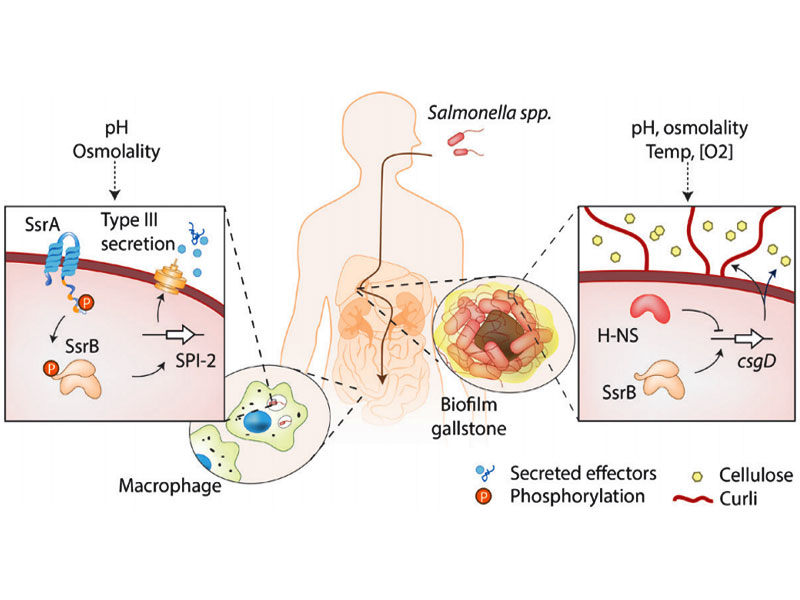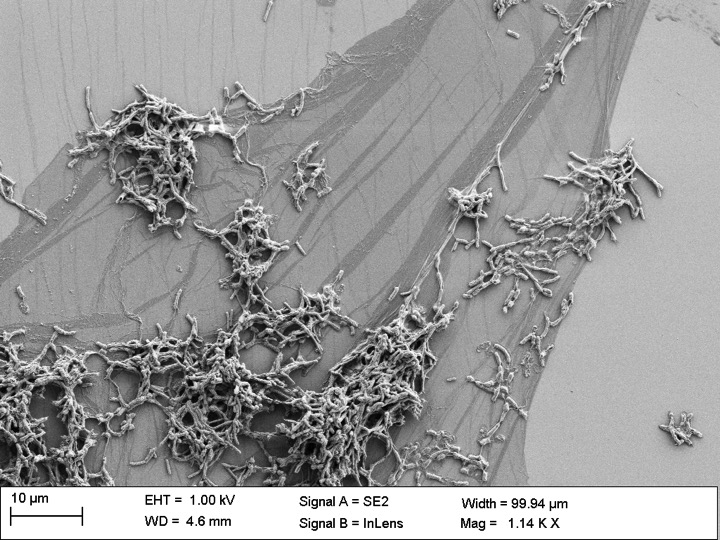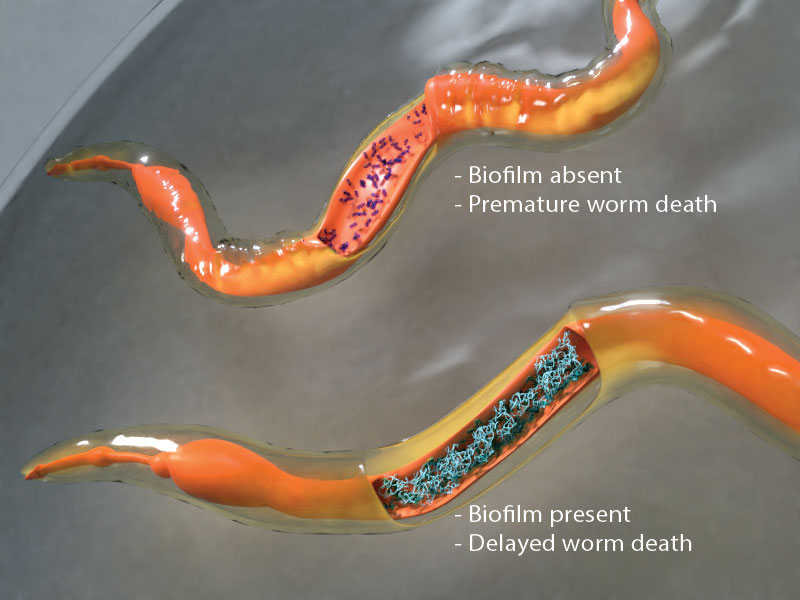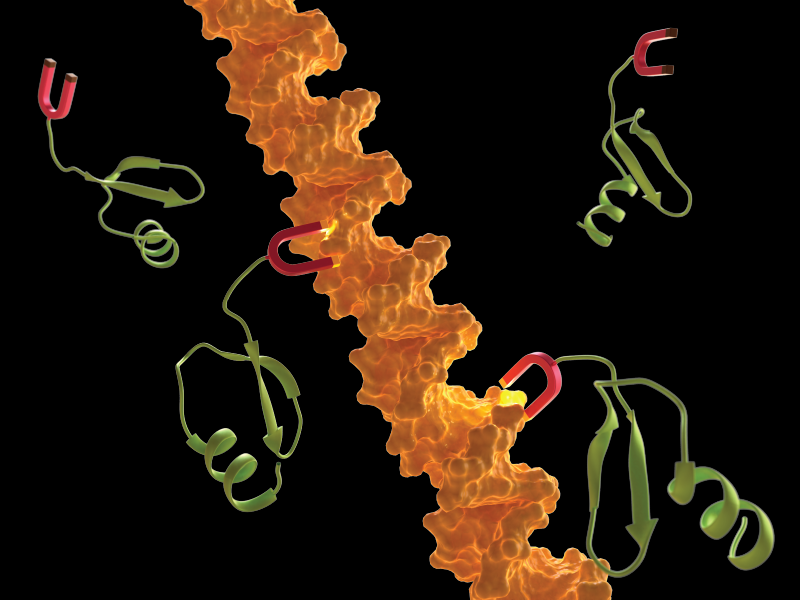Salmonella Lifestyle Choices
Andrew MS Wong | February 2016
Researchers from the Mechanobiology Institute (MBI), National University of Singapore have discovered that the bacterial protein SsrB is the molecular switch for determining whether Salmonella infections become acute and virulent, or remain in a dormant carrier state. This study is published in eLife (Desai et al., The horizontally-acquired response regulator SsrB drives a Salmonella lifestyle switch by relieving biofilm silencing, February 2, 2016, eLife 2016; 5: e10747, doi: 10.7554/eLife.10747).
A bacterial molecular switch between virulence or dormancy
Salmonella is responsible for many human gastrointestinal diseases, ranging in severity from diarrhoea to typhoid fever. Once it has entered the host body, Salmonella is able to successfully thrive by adopting one of two distinct lifestyles. The first of these is the virulent lifestyle, where Salmonella resides in a modified vacuole inside the macrophage after engulfment. Within this Salmonella-containing vacuole (SCV), the bacteria are able to survive, reproduce, and activate virulence factors, and eventually escape the macrophage to spread infection. In the dormant lifestyle, multiple Salmonella join together to form a biofilm, a matrix-encased bacterial layer which can adhere to epithelial cells, gallstones, and tumours. In this communal state, Salmonella are highly resistant to attack from antimicrobials or the host immune system, and remain persistent as well as asymptomatic in the body until conditions favour switching to the virulent lifestyle.
Lifestyles of the persistent and infectious
These two lifestyles are controlled by two-component regulatory (TCR) systems, which consist of a membrane- bound sensor protein and a response regulator protein inside the bacteria. Much like putting your hand out of a window to check the weather, the sensor protein enables the bacteria to probe the environment. After measuring different factors such as acidity, antibiotic levels, or osmolarity, the sensor protein sends a chemical signal via transfer of a phosphate group to the response regulator protein. The phosphorylated response regulator is now activated, and it can change the expression of target genes, which drive the bacterial response to the external stimuli.
A classic example of a TCR system is SsrA/SsrB, which is essential for establishing the virulent lifestyle. When the SsrA sensor detects that Salmonella is in the acidic SCV, it signals the SsrB response regulator. Phosphorylated SsrB activates virulence gene expression and synthesis of disease-causing needle and effector proteins.
Despite the identification of the gene csgD as the master regulator of biofilm formation, the mechanism by which Salmonella switches between the two lifestyles was still unknown. By elegantly combining molecular biology and biochemical techniques with confocal and scanning electron microscopy, a multidisciplinary team of scientists led by Dr. Stuti Desai and MBI Principal Investigator Prof. Linda Kenney discovered that SsrB plays a dual role in regulating the dormant and virulent lifestyle. The first hints for this came from Salmonella lacking SsrB, which were unable to form biofilms. However, unlike virulence gene activation, SsrB did not need to be phosphorylated by SsrA before regulating biofilm formation.
A multidisciplinary team led by Dr Stulti Desai and MBI PI Prof Linda Kenney discovered that SsrB plays a dual role in regulating the dormant and virulent lifestyle.
Histone-like nucleoid-structuring protein (H-NS) silences many Salmonella genes, including csgD. This gene silencing takes places through H-NS binding to DNA, in order to form a stiff nucleoprotein filament that physically blocks DNA reading enzymes from accessing the gene. In collaboration with MBI PI Assoc. Prof. Yan Jie and Dr. Ricksen Winardhi’s expertise in single molecule manipulation, the researchers applied atomic force microscopy to observe Salmonella DNA at the nanoscale, which revealed that unphosphorylated SsrB binds to DNA and causes it to bend at an angle of around 82 degrees. This bending relieves H-NS induced stiffening and silencing of csgD, allowing its expression and promoting formation of biofilms.
This study reveals that SsrB is the key decision maker for determining Salmonella lifestyle choice. In conditions that suit infection, the SsrA/SsrB TCR system phosphorylates SsrB, which then activates genes driving the virulent lifestyle. However, in multicellularity-promoting conditions, the presumed lack of activity from SsrA leaves SsrB unphosphorylated, and its anti- silencing of csgD leads to the bacteria assembling into biofilms to adopt the dormant lifestyle. Understanding the dual role of SsrB may lead to new antibiotic strategies targeted against the different lifestyles of Salmonella.











